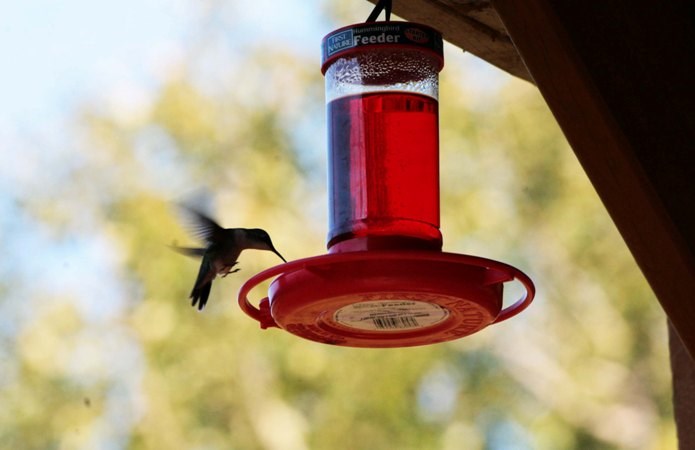Last week we introduced the topic of hummingbirds. This week our column continues with this theme and more specific guidance on what gardeners can plant to attract and entice these little beauties to call our garden their summer home. This column continues to be dedicated to my good friends Brenda and Randy, who enjoy the hummingbirds that visit them at their home at the lake.
In general, hummingbirds are attracted to brightly coloured blooms that are in tubular shapes as these flowers typically produce lots of nectar. They require consistent blooms throughout the growing season so they are ensured of a constant food source.
First, let's think about native plants that will feed hummingbirds in natural environments. The boreal forest is a supreme natural habitat for these little lovelies. Some essential food sources for them in addition to nectar include small insets, larvae, insect eggs and spiders. These nutritional components are necessary for a balanced diet – especially for the rapidly growing hatchlings. It is essential for adult hummingbirds to eat several dozen insects on a daily basis.
Another added benefit is while these birds move among plants sipping their nectar, they also spread pollen. Hummingbirds do not directly consume pollen but much pollen can be stuck on their bodies while sipping nectar. There are more than a hundred native plant species that rely on hummingbirds to be their chosen source of cross-pollination.
Sap is another food source when food is scarce. You can often see them sipping sap from wells drilled by woodpeckers. Some hummers have been observed eating ashes and sand in small quantities as well. However, it may be that instead of the ash or sand itself, the birds were consuming small insects that were present.
The boreal forest is a great habitat. In the spring the hummingbirds can enjoy native columbine, lobelia, horsemint, beardtongue while as we move into summer and early fall available is the red lily, blanket flower, phlox, milkweed, harebell and monarda. We won’t venture into the less attractive but still necessary plants we call weeds. Let’s not forget the native woody species like the crab apple, chokecherry, saskatoon berry, honeysuckle and dogwood. Also of course are the trees like poplar, ash, oak and birch when they are flowering in the spring.
For those of us who live outside of the forest fringe, we need to entice these birds during their migration to our gardens with bright, tubular flowers and, if we choose, a feeder or two filled with a mixture of four parts sugar to one-part water. Please note, that it is important to keep these feeders clean so take a moment to wash them up prior to refilling.
Plant annuals in full sun areas like salvia, snapdragons, zinnia, nicotiana, petunias and geraniums attract the birds. In shady areas, plant fushia, impatiens, begonia and morning glory. On the prairies, perennials like lupins, monarda, penstemon, columbine, foxglove and daylilies will keep these little critters happy as well as woody ornamentals like Ohio buckeye, lilacs and honeysuckles. Those who live in less severe zones can choose azalea, hibiscus, weigela, buddleia and butterfly bush.
Hanbidge is the lead horticulturist with Orchid Horticulture. Find us at www.orchidhort.com; by phone at 306-931-4769; by email at info@orchidhort.com; on facebook @orchidhort and on instagram at #orchidhort.



